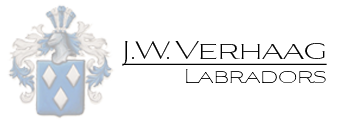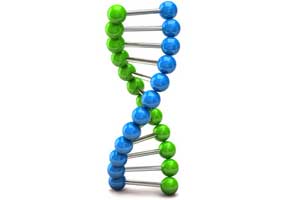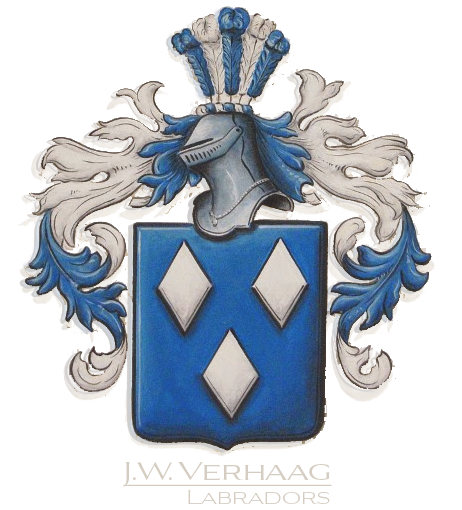

The X-factor
Breed the best to the best and HOPE for the best is what breeders aim for when selecting breeding partners for their dogs. How often have you noticed that two champion parents together failed to produce a single champion or in that case a decent-looking offspring whereas two average parents when bred together produced winning offspring every time the breeding was repeated? Sound familiar?
On January 17th, 1869 in Italy a person named Federico Tesio was born. During his lifetime (85 years) he bred some of the best racehorses in the world. His horses dominated the racing scene winning most of the prestigious races entered. Their presence was also felt as to how they produced. Horses such as Nearco, Tenerani, Niccolo Dell’Arca, Donatello 2, and Ribot (to name a few) made their mark as successful racehorses but also as producers. With a small group of mares, Tesio was able to dominate the thoroughbred breeding industry based on his breeding approach. When studying the pedigrees of his famous horses the same line-breeding principle is continually applied:
Linebreeding back to famous horses (champions and producers) primarily through their daughters!
You may ask yourself what horse breeding has to do with dog breeding. In the thoroughbred breeding industry, there is only one objective and that is to breed a horse who will reach the finish line in the shortest period of time. To be able to do this requires a horse with the correct confirmation. Without the correct confirmation, a horse may mentally want to win but does not have the correct construction to carry itself over the finish line (the selection criteria). Selected criteria include:
- correct straight legs
- correct shoulder placement for a long stride
- strong back
- well-muscled hindquarters
- soundness (genetically)
- correct temperament
When examining the above selection criteria one sees that these criteria are quite similar to what dog breeders want to achieve:
Breed type, temperament, and soundness
Federico Tesio achieved his success based on his breeding method of line breeding back to famous horses through the maternal line.
Studying the pedigrees of influential dogs in our breed (confirmation and breeding) has continuously alerted me that they all have one thing in common. That is that they all had excellent mothers or were line bred to or descended from a strong maternal line. This is not a coincidence.
What Tesio focused on was the X chromosome that is passed down from the mother to her sons and daughters in each generation.
Every dog has 39 pairs of chromosomes. These chromosomes are paired together except for the X and the Y chromosome. The female has two X chromosomes (only one is active). Of these two X chromosomes, only one is passed on to her offspring (either the active one or the non-active one). The male on the other hand only has one Y chromosome (inherited from his father) and one X chromosome (which he inherited from his mother).
When a sperm cell and an egg cell (oocyte) combine during fertilization, each cell passes 50% of its DNA to the new cell created. This cell forms the future individually and it continues to multiply and activate different genes to eventually produce the new individual. The process in which the DNA is passed on to the new fertilized egg cell results in a totally new combination of DNA. This process during conception is known as “crossing over.” This occurs with each chromosome.
However, there is one exception which is the X and the Y chromosomes (the chromosomes that determine the sex of the individual). During the “crossing over” little DNA is exchanged between the X and the Y chromosome. Remember that the X chromosome is passed on from generation to generation. Hence a good brood bitch passes her X chromosome onto her daughters and her sons.
The X chromosome is larger than that of the Y chromosome and carries more genetic information. Her sons again can only pass it on to their daughters. That is why when I analyze a stud dog the first thing that I look at is who his mother, grandmother, and great grandmother are.
Gregor Mendel (the father of genetics) was the monk who dedicated his life to growing peas to try to find as to how certain characteristics such as pea colour and size were inherited. His principles have become the foundation upon which our current genetics and breeding plans with regards to dog breeding is based upon.
An American scientist (Thomas Morgan) went one step further and discovered what has been known as “sex-linked genes.” He experimented with fruit flies and discovered the following:
- that male flies with white eyes bred to female flies with red eyes produced flies (male and female) that all had red eyes.
- male flies with red eyes bred to female flies with white eyes resulted in all of the males having white eyes and all of the females having red eyes.
The significance of this experiment was that some traits are sex-linked being determined by one parent. This was later attributed to the X chromosome that female fruit flies pass on to their sons and the X-chromosome that all of the female flies receive from the male parent fly.
During the conception (uniting of a sperm cell with an egg cell) the following can occur:
- the Y chromosome combines with one of the X chromosomes of the female (the active one or the non-active one). This results in a male. This male can either inherit the active X chromosome from his mother causing him to look more like her than his sire or the non-active one causing him to resemble his mother less.
- the X chromosome of the male (which he received from his mother, in this example the active X chromosome) combines with one of the X chromosomes of the female (active or inactive). Should the active one of the female combine with that of the male we get a female puppy who bears a strong resemblance to that of her mother. Should the female puppy receive the inactive X chromosome from her mother there is a stronger chance that she resembles her sire (active X chromosome who again resembles his mother).
To summarize:
A male dog who has an excellent mother (brood bitch or confirmation, preferably both) has received her X chromosome that contains her DNA. This X chromosome is again passed on to his daughters. This is referred to as a dog that is a “good brood bitch sire.”
If you study the pedigree of influential sires you will find that they all had one thing in common. They all had excellent mothers. These bitches may not all have been champions but they were excellent producers being able to pass their strong X chromosome onto their sons who were able to pass it on to their daughters.
A good stud dog is created by a strong female line, the foundation of the pedigree. This is referred to by some breeders as the bottom portion of the pedigree, the female line, or the X-trial. It all comes down to one thing: the weakest link in the pedigree is the bottom half (mother, grandmother, and great grandmother).
Some breeders try to increase the chance of their puppies inheriting the strong X chromosome from a famous foundation bitch by line breeding back to her. This is done through the sire and dam since both may carry the X chromosome.
This method can also be applied when breeding back to a famous sire that carries the strong X chromosome inherited from his mother. My own observations have taught me from studying the pedigrees of influential dogs and reading books based on the breeding methods of Tesio that the best results are achieved when line breeding back to a famous brood bitch or stud dog through:
- his daughters only
- his sons and daughters
But not when line-breeding via his sons (they do not inherit the X-chromosome from their sire, they only acquire his Y chromosome).
For genes that are not connected to the X chromosome, there is no difference as to whether it is passed from the bitch or not.
EXAMPLE:
| Champion Born to Win (XY)Passes y chromosome to his son | Speechless (XY)(passes y chromosome to his son) | |
| Champion Xtra Supreme (XY) (receives x chromosome from his mother which he passes on to his daughters) Receives y chromosome from his father and passes this on to his sons) | Diva (XX)(passes x chromosome to her son) | |
| Champion Xtra Fine (XX)(passes x chromosome to her son) | Champion Mr. Wonderful (XY) | |
| Champion Xtra Ordinary (XX)(passes x chromosome to daughter) | ||
| Big Regret (XY)(passes x chromosome to his daughter) | Once in a Lifetime (XY)(passes y-chromosome to his son) | |
| Champion Xtra Unique (XX) (passes x chromosome on to her sons and daughters) | No Regrets (XX)(passes x chromosome to her son) | |
| Champion Xtra Special (XX)(passes x chromosome to her daughter) | Gold Digger (XY)(passes x chromosome to his daughter) | |
| Champion Xtra Ordinary (XX)(passes x chromosome to daughter) |
The above fictive pedigree demonstrates how the X and the Y chromosome are passed on from generation to generation. In this pedigree, the puppies from this combination are line bred to Champion Xtra Ordinary. Her X chromosome is passed on through both her grandson and granddaughter. All of the puppies will inherit at least one of her X chromosomes. The female puppies from this combination have the possibility of inheriting two of her X chromosomes giving them the possibility to excel in the show ring and in the whelping box. The males from this breeding will all inherit one of her X chromosomes giving them the potential to excel at stud.
The result of a successful litter is not just the result of one good chromosome but of all 39. Yet the X and the Y chromosome are the only ones that we can follow in a pedigree to be able to determine where the good genes come from.
Good brood bitches will have two good strong X chromosomes and are able to produce excellent offspring since they are able to pass on either one of their X chromosomes. When examining a pedigree the first thing that I ask myself is how strong the bitch line is? Has the bitch line been able to reproduce itself over and over again in each generation?
An example of this is the Labrador Retriever “Covetwood Elouise of Carpenny.” An English show champion, winner of at least 10 challenge certificates, and Best in Show two times at the Labrador Retriever Club Champion Show (Great Britain). Her fantastic show record speaks for herself, yet as a brood bitch she really revealed how she was able to pass her looks onto her children. When bred to Augustus Tuplady of Leospring a dog of field trial lines and a field trial winner himself, a son from that litter was Carpenny Anchorman, a show champion himself who was also Best of Breed at Crusts in 2004! In each litter when bred to different stud dogs she produced champions (Walpole and Rustina) who themselves went on to produce champion offspring.
With the wrong bitch a (future) stud dog can fail miserably! Therefore we cannot make a judgment of a young sire based on one litter alone. In the ideal world, it would be to breed him to different bitches of different bloodlines. Once these puppies mature and develop an indication can be given as to what his strengths and weaknesses are as a breeding animal. Remember no stud dog is perfect. Dominant stud dogs (prepotent) are few and far between! Find them and use them wisely!
With the genetically correct bitch, all stud dogs can succeed! With the wrong bitch a (potential) stud dog can fail (miserably).
Bibliography:
1. Beauchamp, R. Solving the Mysteries of Breed Type. Doral Publishing, United States Of America, 2002. P.67 -68, 201- 208.
2. Craig, P. Born to Win Breed to Succeed. Doral Publishing. United States of America, 1997. P.70 – 147, 170 – 173.
3. Hendrik, P. Genetics of Populations. Jones & Bartlett Publishing inc., Boston. 1983. p. 523-537.
4. Glengarry, J. Let’s Breed A Champion Racehorse. 2000, New Zealand. Jack Glengarry Racing Services. P. 6 – 50.
5. Glengarry, J. Upgrading Thoroughbred Families (Using The Guidelines Laid Down By Federico Tesio). New Zealand, 1995, D. Bateman Ltd. P. 4 – 35, 60 – 70.
6. Grossman, A.. The Standard Book of Dog Breeding. 1992. Doral Publishing, U.S.A. p. 31 – 34, 43 – 45, 105 – 110.
7. Hampton, H. The First Scientific Principles of Thoroughbred Breeding. Part 1 and 2. Scientific Breeding And Racing Publications LTD. 1954. New Zealand. Part One p. 2 – 18. Part Two p. 42 – 70.
8. Labradorikirja 2000 (Labrador Pedigree Boog Finland 2000). Painotalo Alprint Kajaani 2000. P. 1 – 323.
9. Lewin, B. Genes. Oxford University Press. Oxford. 1990. p. 466-477.
10. Pedigree dynamics & Jane Henning Bloodstock. Cheating at Genetic loto.
http://www.pedigree-dynamics.com.au/pdf/Cheating%20at%20Genetic%20Lotto.pdf
11. Robinson, R. Genetics For Dog Breeders. Pergamino Press. Oxford. 1990. p. 187-210.
12. Roslin Williams, M. Reaching For The Stars.Doral Publishing, United Kingdom 2000. P. 61 – 72, 87 – 95.
13. Russell, P. Genetics (4th Edition). Harper Collins College Publishers 1996.p. 9 – 12, 18 – 39, 66 – 87, 100 – 102, 134 – 140 695 – 707
14. Spryer, L. Biochemistry 4th edition. W.H. Freeman & Company. New York. 1995. p. 975-994.
15. Ting, B & G. Labrador Stammbaumbuch 1997. Digital Print, Germany p. 1 -121.
16. Wikipedia encyclopedis http://en.wikipedia.org/wiki/X_chromosome
